“They Will Have Been So Beautiful”, a collaboration between Amy X Neuburg and the Paul Dresher Ensemble, premiered a little over a week ago at U.C. Berkeley’s Zellerbach Playhouse. It was an event I was happy to have attended, as it lived up to its future-perfect-tense name.
“They Will Have Been So Beautiful” was actually ten pieces by ten different composers, all inspired by Diane Arbus’ “stunningly poetic 1963 Guggenheim grant application titled American Rites, Manners and Customs“. Each composer selected a photograph or series of images that spoke and him or her and to use as the inspiration for the music. The performance featured Neuburg on voice and electronics, with members of the Paul Dresher Ensemble and guest performer John Schott on guitar.
The evening opened with Pamela Z’s piece 17 Reasons Why based on a photograph by Donald Swearingen. It began in a fashion very typical of Neuburg’s solo work where she layers looped and processed live recordings of her voice to create thick textures. There is always a precision to her performance that makes it work live, and I can only imagine the challenge in getting the full ensemble to match it as tightly as they did.
Lisa Bielawa’s Ego Sum was a much sparser piece, featuring text overheard in “transient public spaces”, such as the New York City Subway. The accompanying photographs featured people coming and going on a bench in a subway station in the Williamsburg section of Brooklyn (I know the station). It would be easy to dismiss the piece as “hipster” for its concept and visual setting, but in my case it made me feel a little homesick even though I was just in New York a couple of weeks earlier.
Paul Dresher’s own contribution, A Picture Screen Stands in Solitude, was perhaps the most poignant of the evening. It featured two photographs: Richard Misrach’s image an abandoned drive-in theater near Las Vegas by , and Hiroshi Sugimoto’s photo of an empty movie palace in Encinitas, California. The text was from an essay by a young man named Michael Nelson named incarcerated in San Quentin for murder, written for a prison course named “Contemporary Issues in Photography.” The images themselves were quite powerful, and very much in the themes of urban decay and sparse built spaces that are featured in many of the photography reviews here on CatSynth. But Nelson’s words are make it emotionally strong. His observations are very detailed and articulate, and also quite melancholy on the subject of forgotten places (and in turn forgotten people). The music was extremely sparse in keeping with the photos, and did not get in the way of Nelson’s words.
Ken Ueno’s piece Secret Meridian, features the composers’ own photographs of the meridian lines in two churches in Italy. It was perhaps the most abstract of the evening, both in its theme and the composition itself. The words felt secondary to me and I found myself focused on the electronic resonance sounds and impressive solos from John Schott on electric guitar and Gene Reffkin on electronic drums.
The song cycle concluded with Amy X Neuburg’s composition Is It Conflict-Free and Were Any Animals
Harmed in the Making of It?. From the start it was pretty obvious this was going to be a more humorous piece, with frequent references to the oft-used punchline “no animals were harmed in the making of this”. And Neuburg didn’t disappoint in that regard, using her distinctive mixture of operatic vocals, musical theater, and clear comedic lines. The piece did have a serious origin, using a photograph of a snowy mountain in Wyoming and the loss of wild winter spaces as the point of departure, but then veering into the absurd including the above lines and images of herself in the bathtub. She deftly managed to put all these elements together into a poetic and theatrical whole.

[Photo by Moe! Staiano.]
Five other pieces rounded out the evening, with composers Fred Frith, Guillermo Galindo, Carla Kihlstedt, Jay Cloidt, and Conrad Cummings. I regret not being able to write about all of them, as each contributed something to the whole of this event. The entire evening was well performed and choreographed between music, projection and lighting, and made for a quite impressive experience. Congratulations are in order to everyone involved in this multi-year project.
Perhaps the strength and intensity of this concert made it even more surreal to exit to the reality of protests in Berkeley on the precipice of a violent confrontation only a few minutes later that evening. Certainly not a planned juxtaposition, but a powerful one.
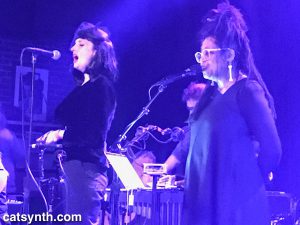
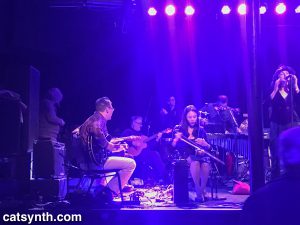
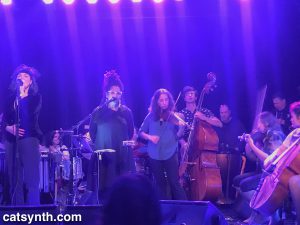
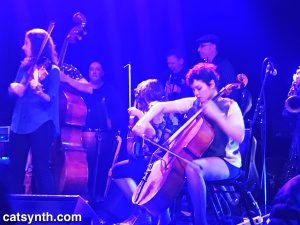

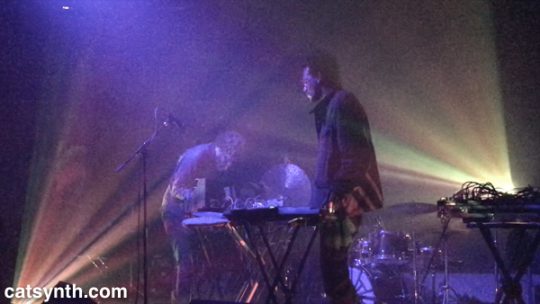
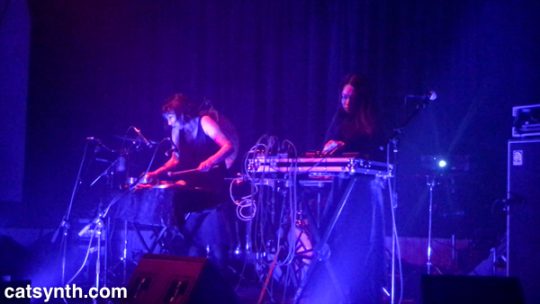
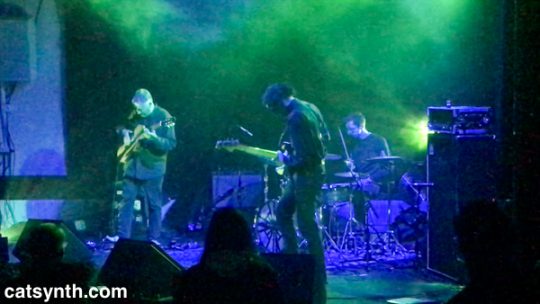



 We at CatSynth often enjoy unusual films, but “Dementia” is weird even among weird films, though the Variety description “May be the strangest film ever offered for theatrical release” seems a bit hyperbolic. The film follows the inner thoughts and actions of a woman as she wanders through dark corners of Los Angeles with even darker characters, while recalling violent events of her childhood. The film is part psychological thriller, part film noir, and part surrealist experiment, constantly jumping between the tropes of all three.
We at CatSynth often enjoy unusual films, but “Dementia” is weird even among weird films, though the Variety description “May be the strangest film ever offered for theatrical release” seems a bit hyperbolic. The film follows the inner thoughts and actions of a woman as she wanders through dark corners of Los Angeles with even darker characters, while recalling violent events of her childhood. The film is part psychological thriller, part film noir, and part surrealist experiment, constantly jumping between the tropes of all three.

